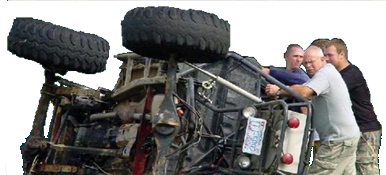RatLabGuy
You look like a monkey and smell like one too
- Joined
- May 18, 2005
- Location
- Churchville, MD
Holley 4160 on a 302, classic bronco,
It's never run right since I've had it and spent a lot of time sitting while I went through other things.
Just tore town and cleaned the carb, was really nasty. Now I'm at the fun part of learning all the voodoo magic of how to tune it.
Currently have the needle on the secondary turned all the way down to take it out of the picture. Think I have the float set right on the primary, at least it's not shooting gas out the vent anymore
Anyway right now it hums pretty good at first on startup, and responds well. But once it warms and the choke open up, it'll still idle fine but if I bump the throttle it leans out to die, have to let off immediately to keep it going.
However if I open the throttle real slowly, it will still rev like it should. Like it can draw gas slowly, but not quickly. This sounds to me like some issue w/ the gas flow not keeping up.
It's never run right since I've had it and spent a lot of time sitting while I went through other things.
Just tore town and cleaned the carb, was really nasty. Now I'm at the fun part of learning all the voodoo magic of how to tune it.
Currently have the needle on the secondary turned all the way down to take it out of the picture. Think I have the float set right on the primary, at least it's not shooting gas out the vent anymore
Anyway right now it hums pretty good at first on startup, and responds well. But once it warms and the choke open up, it'll still idle fine but if I bump the throttle it leans out to die, have to let off immediately to keep it going.
However if I open the throttle real slowly, it will still rev like it should. Like it can draw gas slowly, but not quickly. This sounds to me like some issue w/ the gas flow not keeping up.


